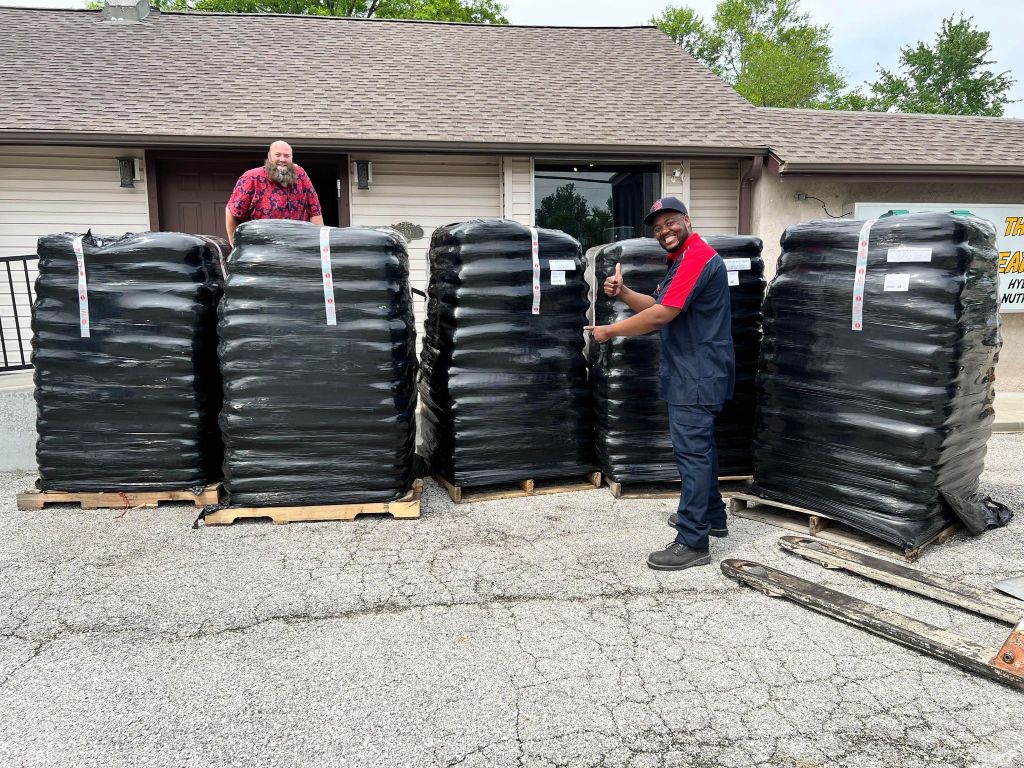Study the Globe of Hydroponics: Exploring Numerous Types
Within the world of hydroponics lies a varied selection of cultivation techniques that offer unique advantages for expanding plants without soil. As we start this exploration of various hydroponic systems, we will uncover the intricacies of techniques like the Nutrient Film Method (NFT), Deep Water Society (DWC), Wick System, Ebb and Flow (Flooding and Drain), and Aeroponics. Each method provides an unique method to supporting plants in a soil-less atmosphere, promising innovation and efficiency in the realm of modern-day agriculture.

The Nutrient Film Method (NFT)
The Nutrient Movie Strategy (NFT) is a hydroponic system that includes a constant flow of nutrient option over plant roots in a thin film to advertise effective nutrient uptake. This method makes use of a shallow stream of water which contains dissolved nutrients, allowing the plant origins to have consistent accessibility to the required elements for growth - The Indoor Earthworm. The nutrient solution streams along the base of the channel, contacting the origins and afterwards receding, offering a highly oxygenated setting crucial for origin wellness
Among the primary advantages of the NFT system is its water efficiency. Because the nutrient solution is recirculated, it needs much less water compared to traditional soil-based gardening. In addition, the regulated atmosphere of the NFT system lessens the risk of nutrient discrepancies and conditions, bring about healthier plants. However, this strategy requires mindful tracking of pH degrees and nutrient focus to make sure optimum plant development. Overall, the Nutrient Movie Strategy is a popular option among hydroponic enthusiasts because of its simpleness, effectiveness, and space-saving layout.
Deep Water Culture (DWC)
Among the numerous hydroponic systems made use of for growing plants, Deep Water Society (DWC) sticks out for its easy yet reliable design. In a DWC system, plants are positioned in web pots, enabling their origins to dangle directly right into a nutrient remedy. This remedy is oxygenated using air pumps and air rocks to guarantee that roots get an appropriate oxygen supply. The trick to success in DWC is keeping the appropriate oxygen degrees in the nutrient option to protect against origin rot and advertise healthy and balanced plant development.
One of the main benefits of DWC is its low upkeep needs. With fewer relocating parts and no demand for an intricate watering routine, DWC is a beginner-friendly option for those brand-new to hydroponic gardening. In addition, the direct access to oxygen and nutrients enables plants to uptake what they need more successfully, often leading to faster growth rates and higher returns contrasted to standard dirt cultivation methods. Nonetheless, regulating water temperature and stopping algae development in the nutrient service are crucial considerations when applying a DWC system.
Wick System
In hydroponic growing, the Wick System is a passive technique that enables plants to attract up nutrition solution with capillary action. see this The capillary activity of the wick permits the nutrient remedy to move from the storage tank to the growing tray, guaranteeing a continuous supply of nutrients to the plants' origins. It might not be suitable for bigger plants or those with high nutrient requirements, as the passive nature of the system can lead to irregular vitamins and mineral circulation.
Ebb and Circulation (Flooding and Drainpipe)
Discovering the Ups And Downs (Flood and Drainpipe) system offers understanding into a vibrant hydroponic method that alternates between flooding and draining the plant origins with nutrient solution. This system runs by regularly flooding the plant containers with a nutrient service from a tank and afterwards permitting the excess service to drain pipes back. The procedure is commonly managed by a timer to make certain regular flooding cycles, giving the roots with oxygen as the solution recedes.
Ebb and Circulation systems are functional and can suit different plant sizes and types. They use an excellent balance of water retention and aeration, promoting healthy and balanced origin growth. The periodic flooding helps deliver nutrients directly to the origins, enhancing nutrient uptake performance. Furthermore, the ups and downs activity avoids water torpidity, lowering the threat of root rot and various other water-related concerns.
This method is preferred among hydroponic fanatics for its simplicity, adaptability, and efficiency to various plant requirements. With appropriate tracking and maintenance, the Ups and downs system can support robust plant development in a controlled hydroponic setting.
Aeroponics
Utilizing a high-pressure misting system, Aeroponics is a sophisticated hydroponic method that suspends plant origins in an oxygen-rich setting to promote optimal nutrient absorption and energetic growth. Unlike various other hydroponic strategies, which immerse origins in water or a nutrient service, my review here Aeroponics delivers nutrients straight to the roots with a fine mist. This haze is splashed at normal intervals, ensuring that the origins obtain a consistent supply of water, oxygen, and nutrients.

Among the crucial benefits of Aeroponics is its ability to make the most of nutrient uptake while reducing water use. By providing nutrients directly to the origins, plants can absorb them a lot more effectively, resulting in faster development prices and greater yields. In addition, the oxygen-rich environment developed by the misting system boosts root development and aids protect against root diseases.
Aeroponics is particularly appropriate for growing leafy environment-friendlies, natural herbs, and various other plants that flourish in oxygenated atmospheres. The Indoor Earthworm. Its effective use of resources and ability to promote fast growth make it a prominent option for hydroponic lovers looking to attain optimal outcomes
Final Thought
In conclusion, hydroponics provides a series of cutting-edge methods for growing plants without dirt. From the more nutrient movie strategy to deep water culture, each method has its own advantages and difficulties. By understanding and utilizing these different sorts of hydroponic systems, individuals can discover new opportunities for sustainable agriculture and take full advantage of plant development in regulated settings.
